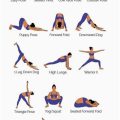Top 5 Signs It’s Time to Change Your Yoga Style: How to Know When It’s Time for a Shift
Yoga is a personal journey that evolves as you grow, physically, mentally, and spiritually. But how do you know if your current practice still serves you? Whether you’re a seasoned yogi or a beginner, the style of yoga you’re practicing may no longer align with your needs. Recognizing the signs can help you move toward a practice that better supports your goals, lifestyle, and wellbeing. Here are five key indicators that it might be time to switch your yoga style.
1. Stagnation: Feeling Physically or Mentally Unchallenged
One of the most obvious signs that you might need to try a different yoga style is a feeling of stagnation. If you’re no longer feeling challenged—whether physically or mentally—it could be a sign that you’ve outgrown your current practice. This stagnation might manifest as boredom, lack of focus, or the sense that you’re going through the motions without engagement.
- Physical Stagnation: Your body may stop responding to the postures, leading to a plateau in strength, flexibility, or endurance.
- Mental Stagnation: Yoga is as much a mental practice as it is physical. If you’re no longer feeling mentally engaged or focused during your sessions, it might be time to look for a style that challenges your mind as much as your body.
Solution: Experiment with more dynamic or physically challenging styles like Ashtanga or Power Yoga if you’re physically unchallenged. If you’re mentally bored, a style like Kundalini or Jivamukti could help reintroduce mindfulness and spirituality into your practice.
2. Misalignment with Personal Goals: Yoga Isn’t Supporting Your Life Objectives
As you progress in life, your goals and needs may shift. What you once sought from yoga might not serve your current priorities. Perhaps you initially practiced yoga for relaxation, but now you’re looking for a more physically challenging workout. Or maybe you’re looking for more spiritual growth, and your current style feels too focused on physicality.
Solution: If your goals are more fitness-oriented, try Vinyasa or Bikram Yoga, which focus on strength and endurance. For deeper spiritual connection, explore Bhakti or Kundalini Yoga, which integrate mantras and meditative practices.
3. Lack of Motivation: No Longer Excited for Class
If you’re dreading going to your yoga class, it could be a sign that you’re in need of a change. Enthusiasm for your practice is critical because yoga is about much more than just the physical. Without motivation, it becomes hard to reap the mental, emotional, and physical benefits of the practice.
- Emotional Burnout: Repeating the same routine over and over can lead to burnout, where the practice starts to feel like a chore rather than something you enjoy.
- Solution: Try switching to a style that offers more variety and excitement. AcroYoga, Aerial Yoga, or Yin Yoga could help you rekindle your passion for the practice. These styles introduce novel poses and techniques that stimulate the body and mind in different ways.
4. Physical Discomfort or Injury: The Style Isn’t Suited to Your Body
Yoga should support your physical well-being, but if you’re frequently feeling discomfort or noticing recurring injuries, your current style might not be right for your body. Some yoga styles are more vigorous, while others are gentler, and it’s important to match your practice with your physical needs and limitations.
- Joint Pain: Fast-paced styles like Ashtanga or Vinyasa may be too intense for individuals with joint issues.
- Muscle Fatigue: Overworking certain muscle groups or repeating strenuous sequences can lead to exhaustion or strain.
Solution: If you’re experiencing recurring physical discomfort, it might be worth switching to gentler styles like Restorative Yoga or Iyengar Yoga. These styles emphasize alignment and slower movements, making them suitable for those with injuries or physical limitations.
5. Disconnect from the Spiritual or Meditative Aspects
Yoga is more than just a physical practice—it’s deeply rooted in spirituality, meditation, and mindfulness. If you feel disconnected from these elements, or if they are missing from your practice altogether, it may be time to switch to a style that brings these components back into focus.
- Focus on Breathwork: Practices like Pranayama and Kundalini place a heavy emphasis on breathwork and meditative practices, helping practitioners reconnect with their inner self.
- Mantras and Chanting: Styles like Jivamukti and Bhakti Yoga incorporate chanting and mantras as a way to deepen the spiritual connection of the practice.
Solution: If you feel disconnected from the deeper aspects of yoga, consider exploring styles that emphasize the mind-body-spirit connection, such as Kundalini Yoga or Jivamukti Yoga.
Key Concepts in Yoga Style Selection
When deciding whether to change your yoga style, it’s essential to understand the core elements of each style:
- Physical Intensity: How physically demanding is the practice?
- Mental Engagement: Does the style incorporate mindfulness, breathwork, and meditative elements?
- Spiritual Connection: Does the practice incorporate philosophical teachings, mantras, or other spiritual practices?
- Focus on Alignment: Is the style more technical, focusing on precise body positioning?
- Adaptability: Can the practice be easily modified to suit different body types or limitations?
Historical Context of Yoga Styles
Yoga has evolved over millennia, with each style emerging from different philosophical and cultural backgrounds. For example:
- Hatha Yoga is considered the foundation of most modern physical yoga practices. It originated in the 15th century and is focused on balancing opposing energies in the body through postures and breathwork.
- Ashtanga Yoga was popularized in the 20th century by Pattabhi Jois. It’s a physically demanding style that follows a set sequence of postures.
- Kundalini Yoga focuses on awakening dormant spiritual energy through breathwork, movement, and chanting. It was brought to the West in the 1960s by Yogi Bhajan.
Current State of Yoga Practice
Today, yoga is practiced by millions worldwide in a variety of forms, catering to different physical and spiritual needs. The increasing availability of online yoga classes has made it easier for practitioners to experiment with different styles from the comfort of their homes. Popular contemporary trends include:
- Power Yoga: A Western adaptation of traditional Ashtanga, focusing on strength and cardiovascular fitness.
- Yin Yoga: A slower, meditative practice that involves holding poses for longer periods to increase flexibility and promote relaxation.
- Aerial Yoga: A newer style that uses fabric hammocks to perform traditional yoga poses with an element of suspension.
Practical Applications of Different Yoga Styles
| Yoga Style | Best For | Key Features |
|---|---|---|
| Vinyasa | Strength and Cardio | Dynamic, flowing sequences that link breath with movement |
| Hatha | Beginners and Relaxation | Slow-paced, gentle postures |
| Kundalini | Spiritual Growth | Breathwork, chanting, and meditation |
| Yin Yoga | Flexibility and Mindfulness | Long-held postures with a focus on deep tissue release |
Stakeholder Analysis: Who Benefits from Changing Yoga Styles?









